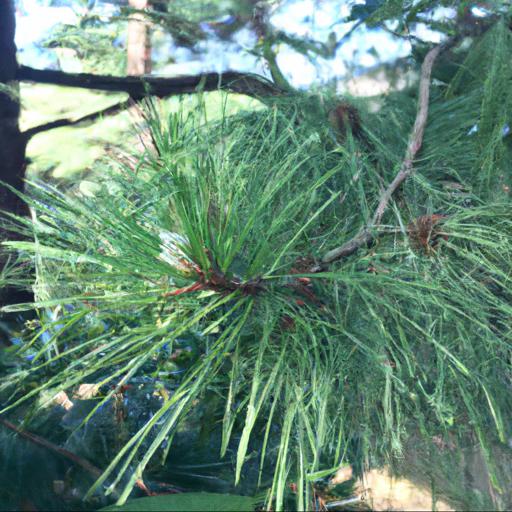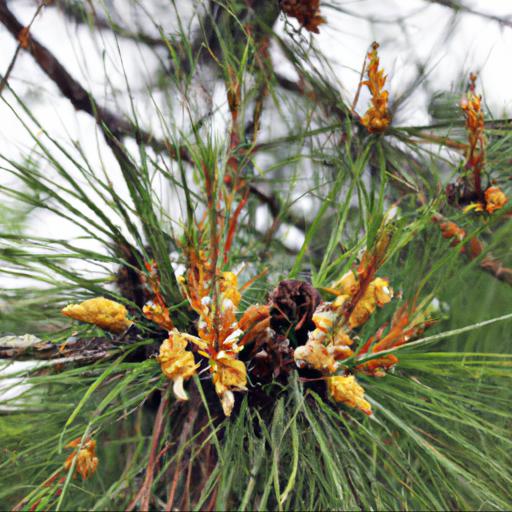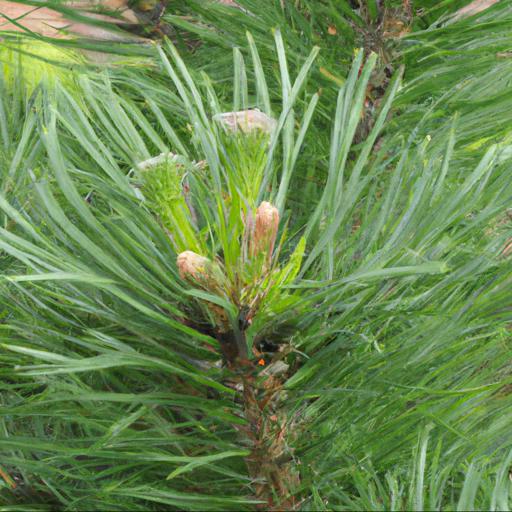Pinus sylvestris, commonly known as Scots Pine, is a species of pine tree found in northern Europe and Asia. It is one of the most widely distributed coniferous trees in the world and is a hardy species that can withstand a wide range of climates. Scots Pine has many uses, including timber, fuel, and ornamental purposes.
It is also a popular choice for landscaping due to its attractive shape and foliage. In this blog, we will explore the many benefits of Pinus sylvestris, from its environmental advantages to its practical uses.
We will also discuss the importance of proper care and maintenance of this species to ensure its long-term survival.
Characteristics of pinus sylvestris

Pinus sylvestris, commonly known as Scots Pine, is a species of conifer native to the Northern Hemisphere. It is one of the most widely distributed conifers and found throughout Europe and Asia, from the far north of Sweden and Finland to the Himalayas in northern India.
It is a medium-sized tree growing to a height of up to 40m and is one of the most adaptable conifers, growing easily in a variety of temperatures and soil types. Pinus sylvestris has reddish-brown bark that can remain on the tree for many years and is rough and scaly with cracks on the surface. Its leaves (needles) are a rich green and generally very long, measuring up to 8 cm in length.
The needles are arranged in bundles of two with a fine coating of white, waxy powder on the surface to help protect the tree from the harsh winter weather. It also develops rosette-shaped cones – unlike other conifer varieties the Pine’s cones open when ripe and hang down from the tree like brush hairs or a beard. Pinus sylvestris isn’t choosy when it comes to its growing environment – it is a hardy conifer tree that can withstand cold, even in harsh climates, and is a great choice for UK gardens as it can tolerate a variety of temperatures and soil types.
It also has low water requirements, so it is drought-tolerant and perfect for dryer areas in the garden. When planted in groups it can provide a useful windbreak and its evergreen foliage ensures it will always look nice in any garden setting.
What’s more, its very long needles combined with the low maintenance make this a great choice for the novice gardener.
Benefits of pinus sylvestris

: Pinus sylvestris, otherwise known as Scots pine, is a highly beneficial species of evergreen coniferous tree which is native to Europe and Asia. It is widely cultivated for its ornamental value, timber and various uses in horticulture and forestry.
In the UK, it holds a prominent presence in many gardens, parks, and avenues. In terms of its aesthetic value, Pinus sylvestris has a lot to offer. Firstly, its foliage adds a strong visual presence as they carry both a luxurious dark green colour and a conical form.
They are also low maintenance – requiring only occasional pruning. Furthermore, it provides food and nesting sites for birds such as woodpecker and nuthatch, aiding the environment and giving garden owners the opportunity to observe beautiful wildlife. The Pinus sylvestris is also renowned for its hardy nature and resilience.
It is both wind and drought tolerant, withstanding some of the harshest of conditions without compromising its growth or development. This tree is also very long-lasting, with an estimated life span of up to 400 years – making it an excellent investment for many generations to come.
For those looking for a reliable and sturdy evergreen tree for their garden, Pinus sylvestris is a great option. Not only does it provide rich visual interest, it is also low maintenance, creates habitats for wildlife, and is resilient to a variety of weather conditions.
With its long life span, this tree is sure to add a touch of beauty and sophistication to any garden for years and years to come.
Growing pinus sylvestris

Pinus sylvestris, commonly known as Scots Pine or Scottish Pine, is a coniferous evergreen tree native to the United Kingdom and Europe. The tree is identifiable by its needle-like foliage, which can range in color from deep green to light blue-green.
In terms of size, this species can reach a height of up to 118 feet and a trunk diameter of up to 5 feet. Pinus sylvestris is an excellent tree for gardeners looking for a hardy species that can tolerate colder temperatures. It is also known to be relatively fast-growing and resistant to many pathogens and fungal diseases, making it a low-maintenance choice for a garden feature.
To achieve the best results when growing Pinus sylvestris, it should be planted in an area of the garden where it can receive at least four hours of direct sunlight per day. The soil should be well-drained and have a neutral pH level, and fertilising in the late spring and early autumn can help to encourage healthy growth.
The bark of the Scots Pine can be susceptible to peeling, so take care to avoid pruning or trimming too soon after planting. With the proper care, a Pinus sylvestris can be a beautiful addition to any garden. The foliage will provide an eye-catching visual throughout the year and can be mixed with other species such as juniper, spruce, and hemlock to create a multi-dimensional coniferous landscape.
The tree can even be used to attract wildlife to the garden, such as foxes, red squirrels, and the Great Spotted Woodpecker, making it a great choice for eco-friendly gardeners looking to encourage native species.
Our video recommendation
Conclusion
Pinus sylvestris, commonly known as Scotch pine, is a species of pine native to northern Europe and Asia. It is an evergreen coniferous tree growing up to 25 m tall, with a trunk diameter of up to 1 m.
It is fast-growing and can live for up to 200 years. Its needles are in bundles of two, with a blue-green color and a sharp tip. Its cones are oval-shaped and reddish-brown in color.
Scotch pine is widely used as an ornamental tree and is also an important source of timber.
FAQ
What are the common uses of Pinus sylvestris?
The common uses of Pinus sylvestris include timber production, pulp production, fuelwood, and ornamental landscaping.
What are the characteristics of Pinus sylvestris?
Pinus sylvestris is a coniferous evergreen tree with a pyramidal shape and a dense crown. It has needle-like leaves that are dark green in color and grow in bundles of two. The bark is thick and scaly, and the cones are ovoid and reddish-brown in color. It is a fast-growing tree that can reach heights of up to 30 meters. It is also very hardy and can tolerate a wide range of soil and climate conditions.
What is the native range of Pinus sylvestris?
The native range of Pinus sylvestris is the temperate forests of Europe, from Spain and Ireland in the west, to the Urals in the east, and from northern Scandinavia in the north, to the mountains of the northern Mediterranean in the south.
How does Pinus sylvestris respond to environmental changes?
Pinus sylvestris is able to respond to environmental changes by adapting its growth and development to the changing conditions. This includes changes in temperature, moisture, and light levels, as well as changes in soil type and nutrient availability. The species is also able to migrate to new areas in response to changing climates.
What are the potential threats to Pinus sylvestris?
The potential threats to Pinus sylvestris include climate change, air pollution, forest fires, insect infestations, and competition with other species.
How can Pinus sylvestris be managed sustainably?
Pinus sylvestris can be managed sustainably by using a combination of silvicultural practices such as thinning, pruning, and prescribed burning. These practices help to maintain a healthy and diverse forest ecosystem, while also allowing for the sustainable harvest of timber and other forest products.

